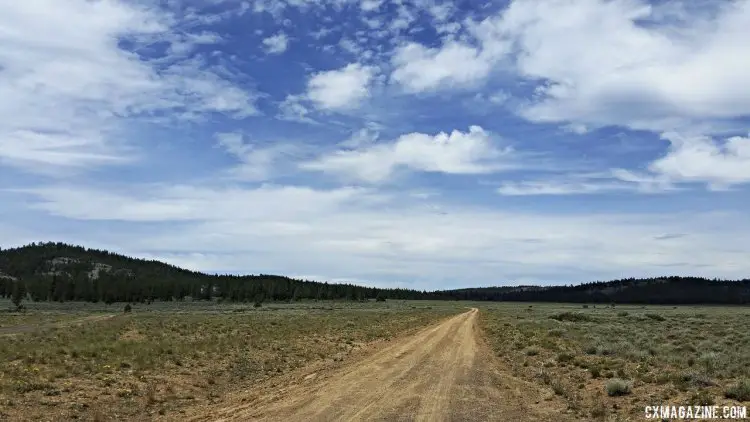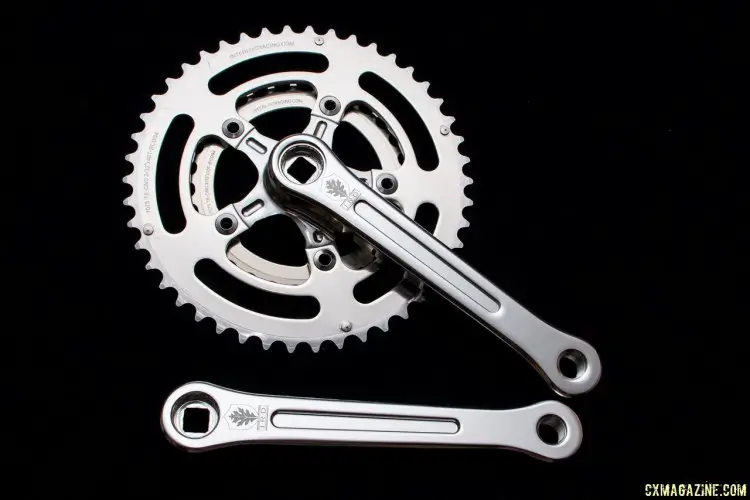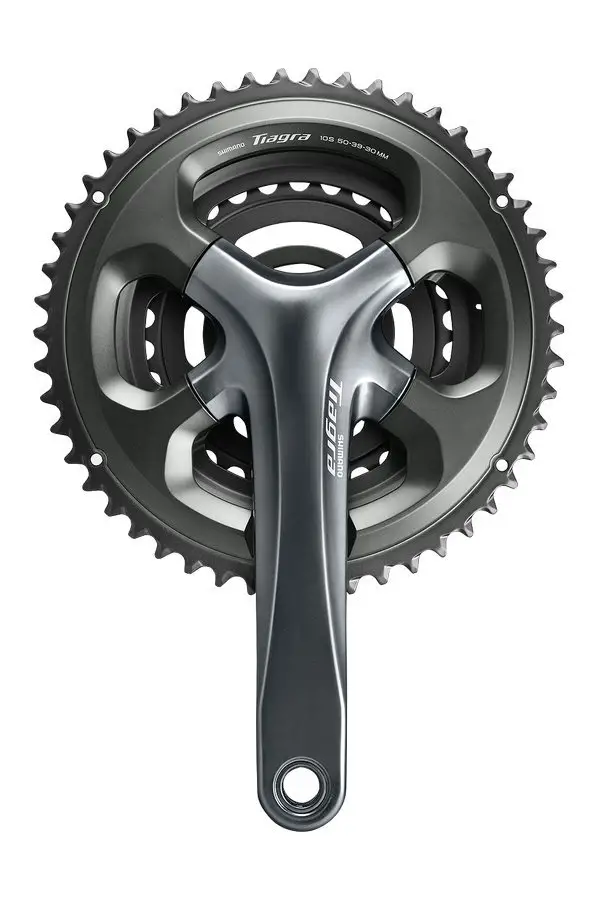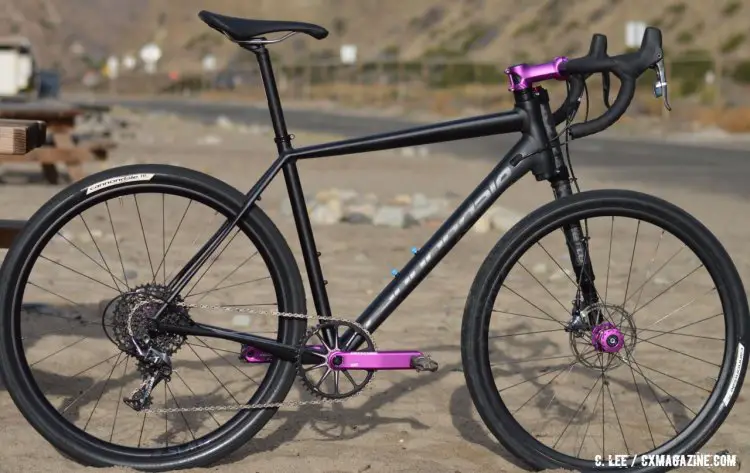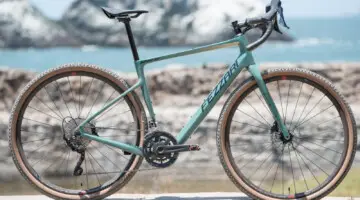For last week’s Mechanical Monday we took a look at options for 1x riders looking to run lower gears for off-season and things like adventure rides and gravel races. This week we’ll look at options for 2x riders as well as other off-the bike options to get down the road less traveled.
2x Rider Choices Abound
Double chainring cyclists by nature typically have a wider range of gearing than single-ring cyclists without a wide-range XD cassette, and also have more options to change gearing for the offseason or a hilly gravel event.
Change the Cassette
Just as with single-ring setups, the easiest option is often to just swap out your cassette for a wider range option.
If you’re riding an 11-28 for cyclocross, you could be able to get an 11-32 cassette to work without changing anything else. You might need to add a few links to your chain, if you’re already maxed out, but most rear derailleurs can be adjusted with the B-screw and limit screws to work with an 11-32 cassette just fine. We’ve pushed the limits, no pun intended, and used 11-36 cassettes fine on short cage road derailleurs, but your mileage may vary for sure, and there’s considerable risk to such a setup when things get muddy.
Downsize the Ring
If you’re running a traditional 46/36 cyclocross double on a 110mm BCD 5-arm crankset, you can swap your chainrings too to go smaller, going to a 34 tooth up front. If you change just your smaller ring, your shifting may suffer as the ramps on the bigger ring are typically designed for a specific size inner chainring. If you’re running a 4-arm crankset, a 4-arm road compact 34 tooth chainring, if made for your crank, could work as well with the same shifting compromises.
Swap Your Crank
Changing your crank for an event may seem complicated and expensive, but if you’re going to be changing or lengthening your chain, adjusting your front derailleur and swapping chainrings, swapping out your crankset instead of swapping your inner ring can be just as easy, offer better shifting, and with the typical pricing structure of OEM replacement parts versus entire units, it can cost nearly the same (not that different than buying low-end Shimano SPD pedals instead of just replacement cleats).
There are a bunch of wide-range compact cranksets, like the IRD Defiant, that offer chainring options like a 30/46, which when paired with an 11-36, is lower than a 38×42 gear. Find your steepest hill and spin! If you go much smaller up front, you may need a medium or long cage derailleur to make the extra capacity work if paired with a large rear cassette.
Triple Check
There are other options too. Remember triple cranksets? 9-speed? All of Shimano’s 9-speed road and mountain bike rear derailleurs and shifters are compatible. Mountain bikers and touring cyclists have relied on triples for decades. The triple isn’t dead, and these parts can be had for a song.
Downsize
Some riders can also go smaller. If you’ve got 650b or 26” wheels around that will work with your disc brake bike, they’ll effectively reduce your gear for a given width tire. It would change your geometry and reduce your bottom bracket height though, so probably not an ideal option unless you have an old-school Euro geometry cyclocross bike and want a quick way to bring it within modern bottom bracket heights.
The 650b option is trendy with the Cannondale Slate and Open U.P. being two bikes that offer this drop bar wheel option, but both go this route to use higher-volume tires, effectively keeping the diameter, gearing and geometry the same as with a narrower 700c tire. This makes it a fun option but not a solution to reduce your gear inches.
Go Easier Without Changing a Thing…On Your Drivetrain
What else? Ride a mountain bike. You probably have one, or can borrow one. And it’s likely to have lower gears. There are so many great tire options out there, you probably can find a great gravel tire for your mountain bike, and if you’ve got a 29er, all the new 700c gravel tires are a great option. And on some courses, you might even appreciate the suspension fork! Unless you’ve got a really light full suspension bike, a hardtail might be your best choice, and you might want to add a rigid fork for smoother courses, but at events like the Lost and Found and Grinduro, flat bars, fat tires and low gears have been great options for racers.
Let’s Get Physical
It’s easy and tempting to reach for the credit card and seek equipment and bike upgrades for a new type of event or riding, but it’s also worth stating the obvious. You can also try physical adaptations. Lift weights, use a stand-up desk at work, do big gear intervals or if nothing else, get off and walk.
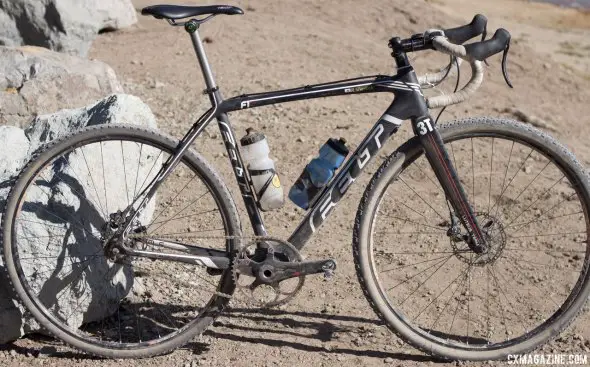
Ron Shevock’s sixth place-winning Felt F1x singlespeed cyclocross / gravel bike, with a 50×19 gear. © Cyclocross Magazine
We’ve seen singlespeed, coaster-brake and even fixed-gear racers at gravel events, and you can take the same approach; stop obsessing about your gear and run what you brung.
Get Taller to go Faster, Farther
In the offseason, it’s not always about looking for a lower gear. Many riders want taller gears for road rides done on their cyclocross bikes and especially, fast-paced gravel pack riding over smoother terrain. To win Grinduro, Barry Wicks opted for a road crankset to have a taller gear for the road sections. There are plenty of options to increase your top-end gear.
The easy out is a bigger chainring, which will require a new chain. A 48, 50 or even bigger chainring is an easy option for 110 BCD cranks, or you can even just swap to a road crankset.
If you elect to go the route of an XD cassette you can get a 10t cog for a 9% harder gear, but if you’re running a 12 tooth cog currently, event switching to an 11 tooth will give you a bit more push and not require a new freehub driver. Worst case, learn to spin those relatively lower gears.
Get Out There and Experiment
The most important thing is get out there and do it. Experimenting with equipment options is fun and will teach you a great deal about caring for and maintaining your bike. And if the DIY approach isn’t for you, hit those gravel rides in your area with what you have and see what others are doing if you’re curious about possible future modifications.













